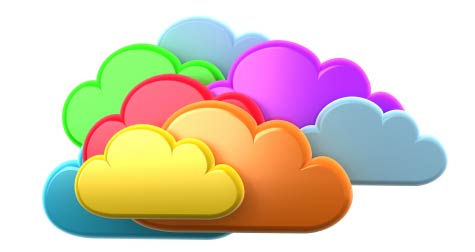It occurs to me that as the Internet of Things emerges as a topic of increasing relevance to CIOs, one of the things they’re going to need to be concerned about is standards. As the cloud-to-cloud integration that is necessarily associated with IoT becomes more commonplace, that integration will entail the adoption of certain standards that may or may not be in place at this point. So where is all of this heading?
I had the opportunity to discuss this topic with Shane Dyer, CEO of Arrayent, an IoT platform provider in Redwood City, Calif. To kick off the discussion, I asked Dyer what role industry associations like the IPSO Alliance, the Cloud Computing Association, and the Cloud Industry Forum are playing in advancing cloud-to-cloud integration, and how effective they’ve been in this regard. He said Arrayent’s customers at this point aren’t asking them to conform to or recommend any cloud-to-cloud integration standard, which tells him that standards organizations working in this area could improve their market education and visibility efforts:
We observe that at the end of the day, big markets, with revenue to be gained or revenue at risk of loss, drive standards. If there is no market, no useful standards emerge. Right now there are no big markets with lots of dollars at stake in consumer IoT. The market that does exist is dominated by point solutions—thermostats, garage door openers, scales, lights—rather than connected systems, like thermostats working with security sensors. So it is natural that standards are not viewed as necessary to grow the market at this time.
Dyer went on to say that a key factor inhibiting adoption is the application complexity of IoT:
There are literally thousands of use cases that have nothing to do with one another. Demand response has nothing to do with home security, which has nothing to do with telemedicine or aging in place. Witness the ZigBee standardization effort. They have come up with a number of application standards such as automatic meter reading, home automation, industrial plant monitoring, and commercial building automation. So cloud standards will likely start around horizontal common factors, such as personal identification information exchange, rather than device information exchange. Having said that, solving security issues is going to be a driver, so keeping your eye on the Cloud Security Alliance might be useful. Cloud-to-cloud integration has to be quite mature within the banking and electronic health record markets. There is a lot of money at stake in both industries. Standards have been driven through economic necessity and government regulation. There are likely many lessons that can be applied to IoT.
Dyer said Arrayent is unaware of any standards that may exist in commercial or industrial applications. But he said in the consumer market, there are no standards yet:
However, there are consumer IoT-connected cloud “centers of gravity” emerging, such as those of Alarm.com, Wink, Nest and IFTTT. In the home energy management space, there is a standardization effort called OpenADR. These clouds have market presence that makes them interesting to product companies to connect—we see product companies using cloud integration to connect with these companies’ clouds. The actual integration work is straightforward; security standards at the cloud-to-cloud level are well understood. The obstacle to further standardization is that it is still very early days. Until very large players see a much bigger pie through standards, there likely won’t be many, other than the de facto kind.
I asked Dyer who the biggest winners and losers will be in a successful cloud-to-cloud integration and standardization outcome. His response:
Winners are likely to be customers and suppliers. True standardization brings higher quality in terms of software reuse, shortened integration timelines, reduced medium/long-term total cost of ownership, fewer internal resource requirements, and accelerated product time to market. There is a broader pool of developers for development and maintenance. Losers are likely to be professional service organizations that benefit from one-off implementation and service contracts. These organizations may have increased costs with initial programs adopting and/or transitioning.
Finally, I asked Dyer how CIOs should approach cloud-to-cloud integration. He said what’s most important is understanding the value realization, or lack thereof:
At this time, CIOs should only seriously consider integrations that will help to expand the business. Ask: Will this integration offer substantial value to the company and to the end customer? If it is purely for marketing purposes, like a press release or a trade show, defer it. Then ask, how will the value be realized? Will there be an expanded sales channel through some logical affinity between your partner and your products? Will it mean better performance, stronger synergies, or more competitive features? If value realization cannot be understood, the project should not be taken on.
A contributing writer on IT management and career topics with IT Business Edge since 2009, Don Tennant began his technology journalism career in 1990 in Hong Kong, where he served as editor of the Hong Kong edition of Computerworld. After returning to the U.S. in 2000, he became Editor in Chief of the U.S. edition of Computerworld, and later assumed the editorial directorship of Computerworld and InfoWorld. Don was presented with the 2007 Timothy White Award for Editorial Integrity by American Business Media, and he is a recipient of the Jesse H. Neal National Business Journalism Award for editorial excellence in news coverage. Follow him on Twitter @dontennant.




